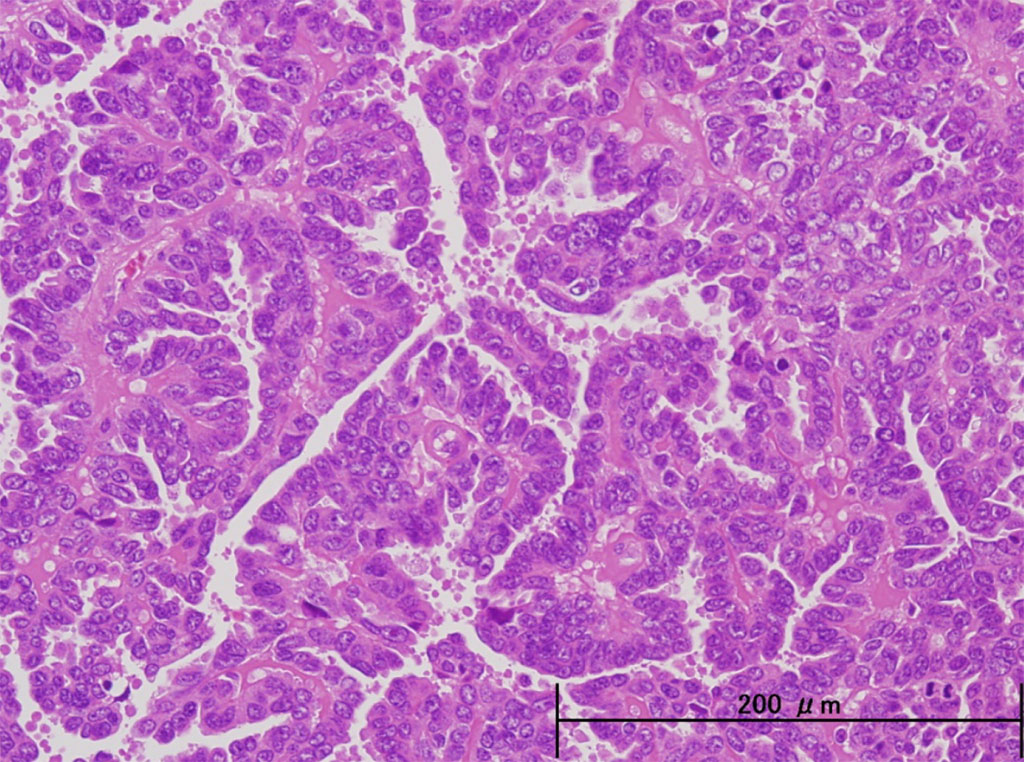Molecular Endometrial Cancer Test Developed
Posted on 13 Sep 2022
Endometrial cancer (EC) is among the tumor types with the sharpest rising incidence over the past 10 years. Abnormal bleeding, defined as any postmenopausal, intermenstrual, or persistent heavy menstrual bleeding, is the lead symptom.
EC patient survival is strongly dependent on stage at diagnosis, with delays in diagnosis and treatment resulting in significant adverse impacts on survival. The current route of diagnosis for suspected EC is transvaginal ultrasound (TVUS) followed by hysteroscopy and endometrial biopsy.

A large international team of oncology specialists led by the University of Innsbruck (Innsbruck, Austria) developed a test to screen and triage women with suspected EC using 726 cervical smear samples from women with and without EC, and validated the test in 562 cervicovaginal samples using three different collection methods: 248 cervical smears; 63 vaginal swabs: and 251 self-collections and four different settings (case/control: n = 388; cohort of women presenting with postmenopausal bleeding: n = 63; a cohort of high-risk women with Lynch syndrome: n = 25; and a nested case/control setting from a screening cohort and samples taken up to three years before EC diagnosis: n = 86).
For all EC cases, histology data following biopsy or hysterectomy were available to confirm diagnosis and deemed as the reference standard. The newly developed test is called WID-qEC, the test relies on a quantitative PCR-based approach to diagnose endometrial cancer in women presenting with symptoms of the disease. The WID-qEC test can be run on samples obtained via a cervical swab, similar to the sample collection in a Papanicolaou test, more commonly referred to as a Pap smear. Samples collected from patients are analyzed for methylation markers that the scientists have identified as being cancer predictive. The technology has already been licensed to Sola Diagnostics (Zams, Austria).
The team used the Illumina's MethylationEPIC array (Illumina, San Diego, CA, USA), a common workhorse platform containing about 850,000 sites for the development of epigenetic tests. They used the array to screen cervicovaginal samples from 572 controls and 144 women with endometrial cancer recruited through the study, and selected markers that evaluate DNA methylation in regions of the genes GYPC and ZSCAN12. The reactions are currently run on a QuantStudio Real-Time PCR System (Thermo Fisher Scientific, Waltham, MA, USA), but most real-time PCR systems can run the test.
The scientists reported that the test's sensitivity depending on the sample type was 97% for cervical smear samples, 90% for self-collected samples, and 100% for vaginal swabs. Specificity was 76%, 87% and 89% percent, respectively. The test also identified 91% of endometrial cancer cases in samples predating diagnosis of up to a year. Performance was similar across menopausal status, age, stage, grade, ethnicity, and histology.
The authors concluded that the WID-qEC assay could represent a patient-friendly test for the screening and triage of women with symptoms suggestive of EC or those at risk of EC. Because of its suitability for use in self-collected samples, the WID-qEC may be a suitable tool for managing women with abnormal bleeding, particularly when access to specialist care is restricted. The study was published on August 24, 2022 in the Journal of Clinical Oncology.
Related Links:
University of Innsbruck
Sola Diagnostics
Illumina
Thermo Fisher Scientific














